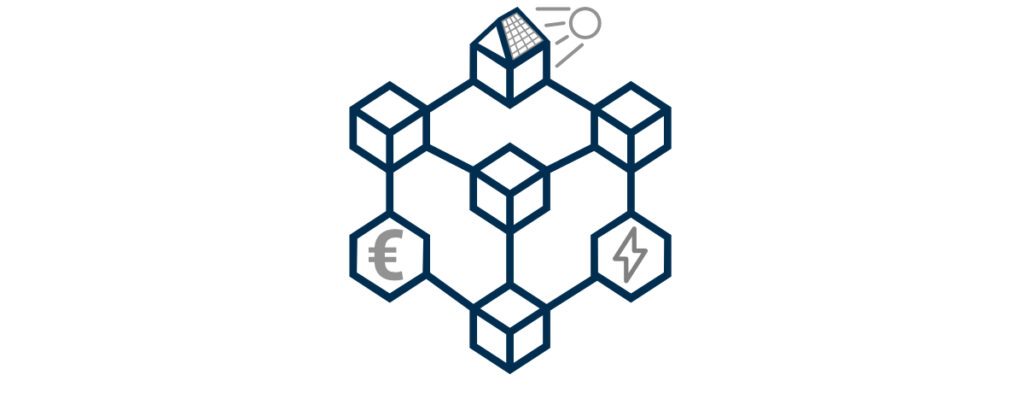Blockchain for a smart energy market: Three-year research project starts
January 29, 2021 | The research project “BEST – Blockchain-based decentralized energy market design and management structures” began in January 2021 with a virtual kick-off meeting of the project partners. Funded by the German Federal Ministry for Economic Affairs and Energy, the three-year project will investigate how blockchain technology can best be used to trade electricity as part of the energy transition.
When blockchain is mentioned, many people first think of bitcoins and cryptosystems, but the technology behind this buzzword is basically available for transactions of any kind – including electricity trading. Transactions are grouped into blocks and given a unique signature, creating a decentralized control system that does not require authorities such as banks or brokers. “Blockchain is interesting for the energy transition because it allows electricity to be traded directly between generating and consuming modules,” explains Norman Pieniak, BEST project manager at the Reiner Lemoine Institute. “The entire energy system benefits from this peer-to-peer trading because it can respond to fluctuations in a much more flexible way. Thus, blockchain supports the decentralized approach of the energy transition and can help reduce the need for compensatory measures such as storage or grid expansion.”
Electricity trading must be adapted to the energy transition
In conventional power generation, utilities buy and sell electricity on wholesale electricity markets for every quarter of an hour in a day. If bottlenecks occur, or if supply and demand are out of balance, transmission system operators compensate with operating reserve – this means, for example, that power plants are ramped up or down at short notice, pumped storage power plants are switched on, or large consumers are disconnected from the grid.
As a result of the energy transition, power generation is becoming increasingly decentralized and volatile – power generation can fluctuate greatly locally. In the future, energy should therefore be consumed as directly as possible and, above all, when it is available. To achieve this, people need intelligent electricity meters, so-called smart meters, which measure and communicate electricity consumption at close intervals. On the other hand, they need local electricity markets where surpluses and shortages can be immediately balanced out among each other in an automated way. This would relieve the overall strain on the power grid. In the BEST project, an electricity market bidding system (EMBS) is therefore being created on the basis of a blockchain that supports this local trading in the spirit of the energy transition.
From simulation to laboratory to trial operation
First, under the leadership of the Reiner Lemoine Institute, which also coordinates the BEST consortium, the requirements for the EMBS are collected, a concept is created and the software is developed on this basis. OLI Systems GmbH, fortiss GmbH and the Fraunhofer Institute FOKUS are also involved in the programming. This is followed by the prototype phase, in which the basic functions of the EMBS are first tested virtually. After that, the EMBS will be connected to real technical systems, consumers and generators in a laboratory environment and tested there. At the end of the development, there will be a six-month practical deployment in the supply area of the electricity provider e-regio, west of Bonn, where customers will test the system under real conditions. In parallel, a knowledge transfer with the energy industry, led by Energieforen Leipzig GmbH, and a legal review of the EMBS by the Weserbergland University of Applied Sciences will take place.
“With the blockchain electricity trading system we are developing in BEST, we are making an important contribution to digitalization and to accelerating the energy transition,” says project manager Pieniak, summarizing the project goal. “It is also important to us for research that the EMBS is developed as open source software – the technology behind it is fully disclosed and can be checked and reproduced by anyone interested.”
